ANYway...on to the birds...
LWR had two new intakes last week: a nestling that I’m pretty sure is a mocker and a brown thrasher.
The nestling was found on someone’s front porch—no injuries but also no nest in sight and the homeowners either had outdoor cats themselves or had free-roaming cats in their neighborhood. The bird was started on antibiotics on intake, just in case we had a cat-attacked baby. Thus far he’s doing well but such young birds do have a tendency to appear to be thriving and then just crash, so we’ll see...
On intake, a quick exam revealed the leg was, in fact, NOT broken. The poor bird’s body was a series of massive ruptured air sacs, and one right at his hip had forced his leg straight out behind his body. As a reminder, birds have air sacs throughout their bodies; those and their hollow bones contribute to their ability to fly. When trauma—a cat attack or a fall from a nest—occurs, these air sacs can rupture and the escaped air migrates to the skin surface, forming what look like air-filled blisters called subcutaneous emphysema. If the “blisters” aren’t in locations likely to cause the bird problems, they can just be left alone and will eventually deflate on their own. This poor fellow needed intervention, though, so I manually deflated his “blisters” and within an hour he was able to perch again, as his leg was no longer pushed out into an awkward position.
Typical sweet brown thrasher, he’s adjusted well to his new digs.
The barreds will move into the large raptor flight once the great horneds are out; they really need the extra space to build up their flight muscles before their release in a few weeks.
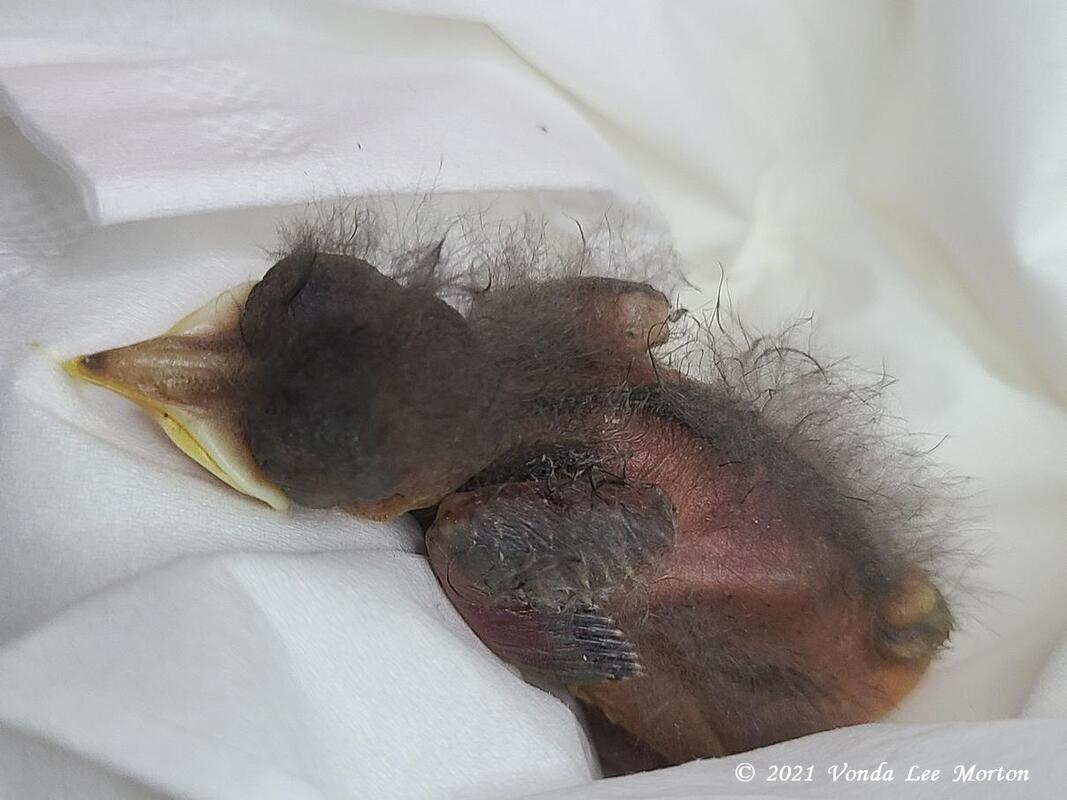
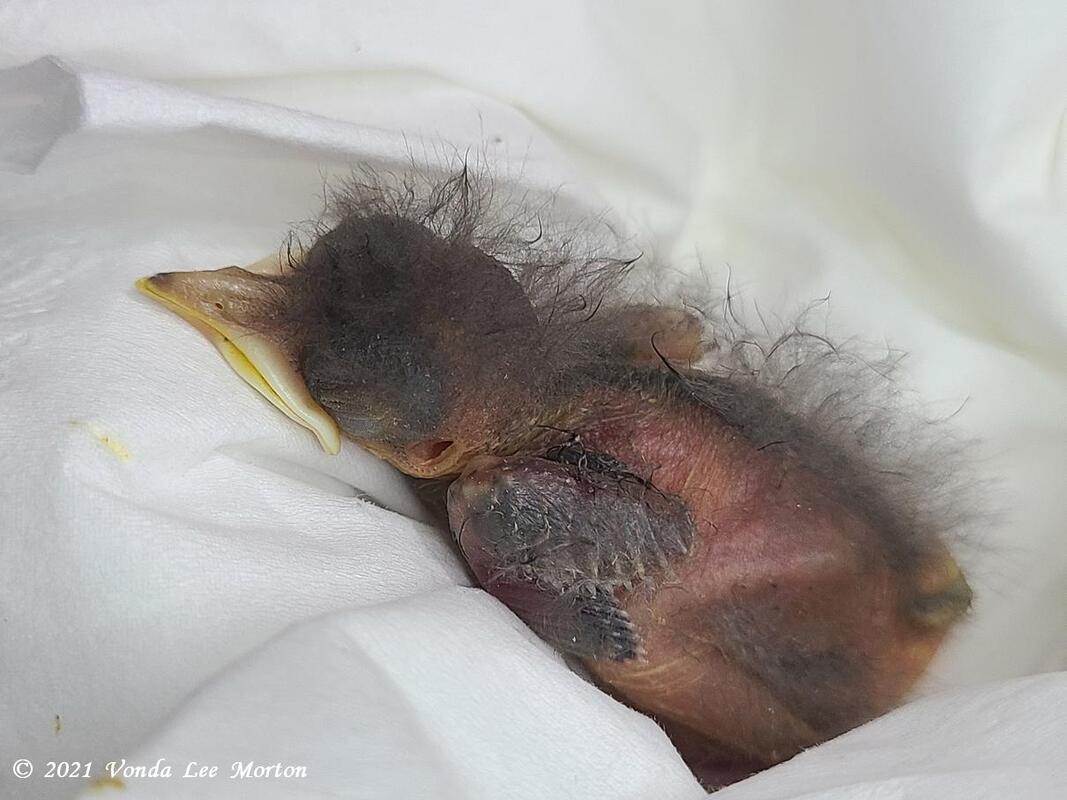
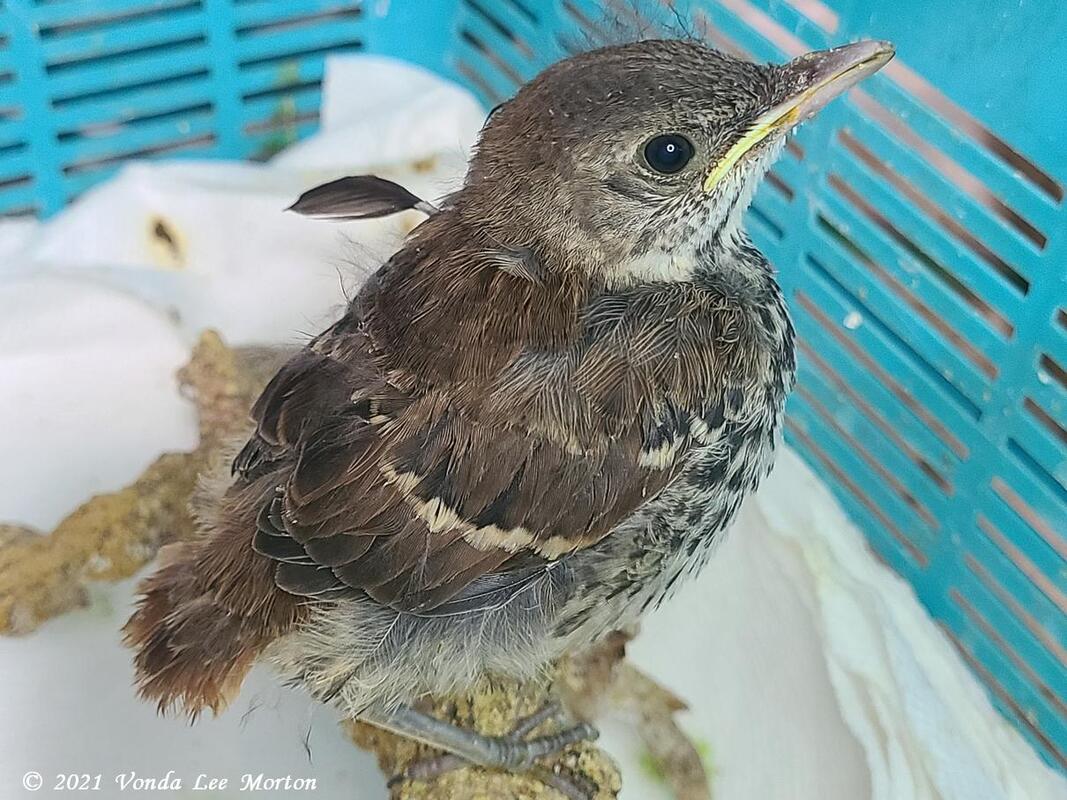
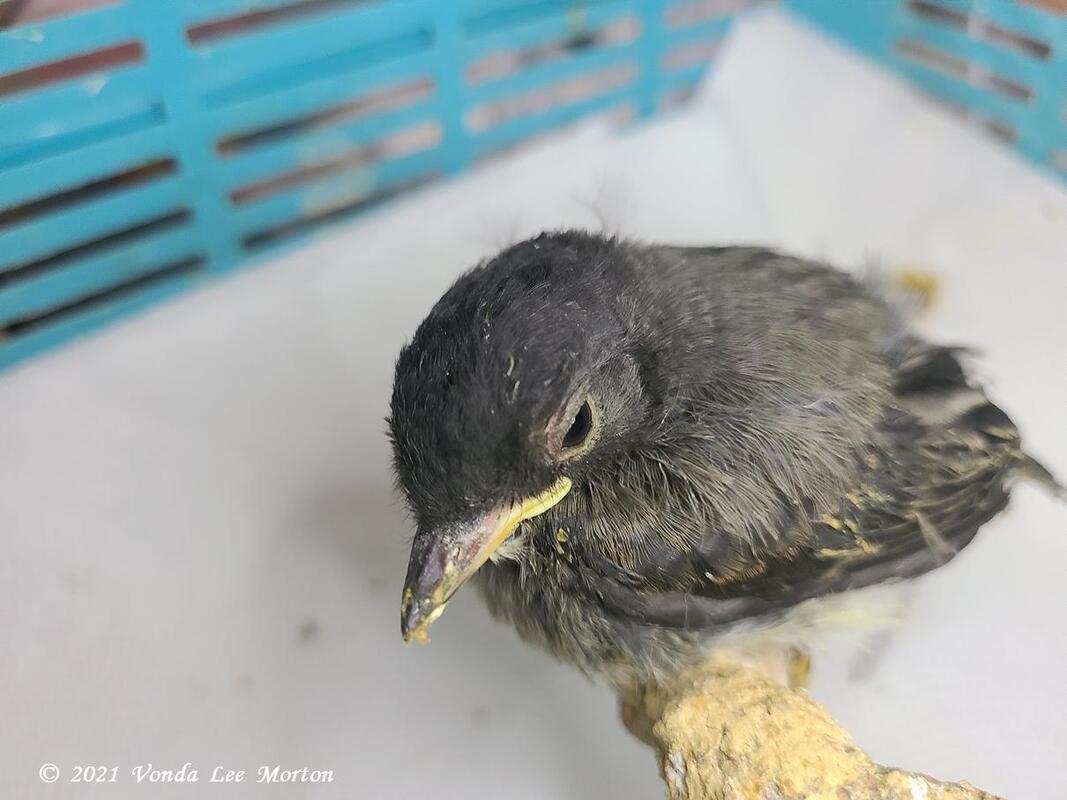
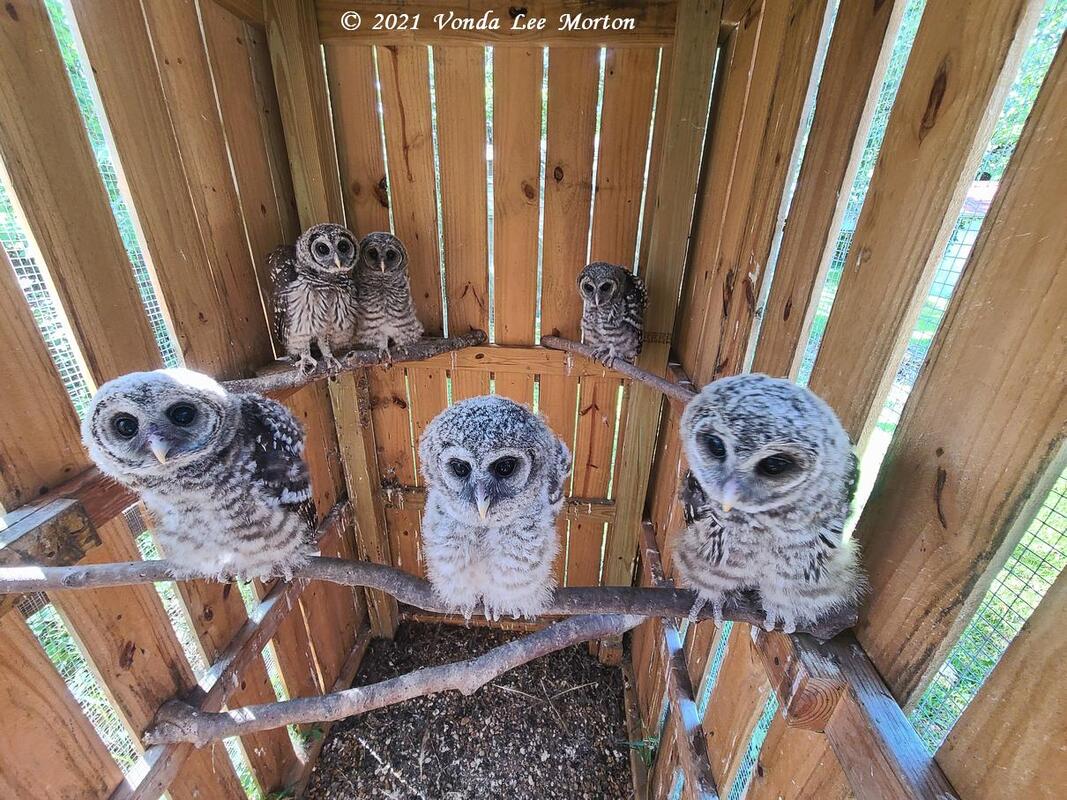
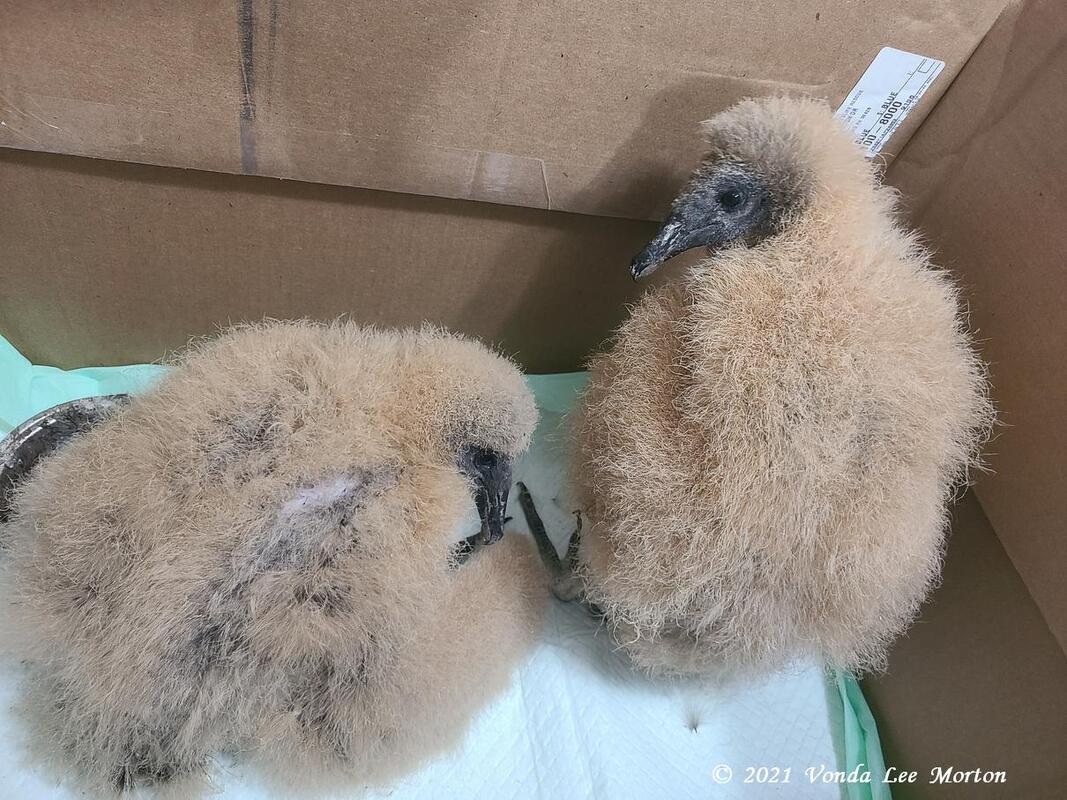
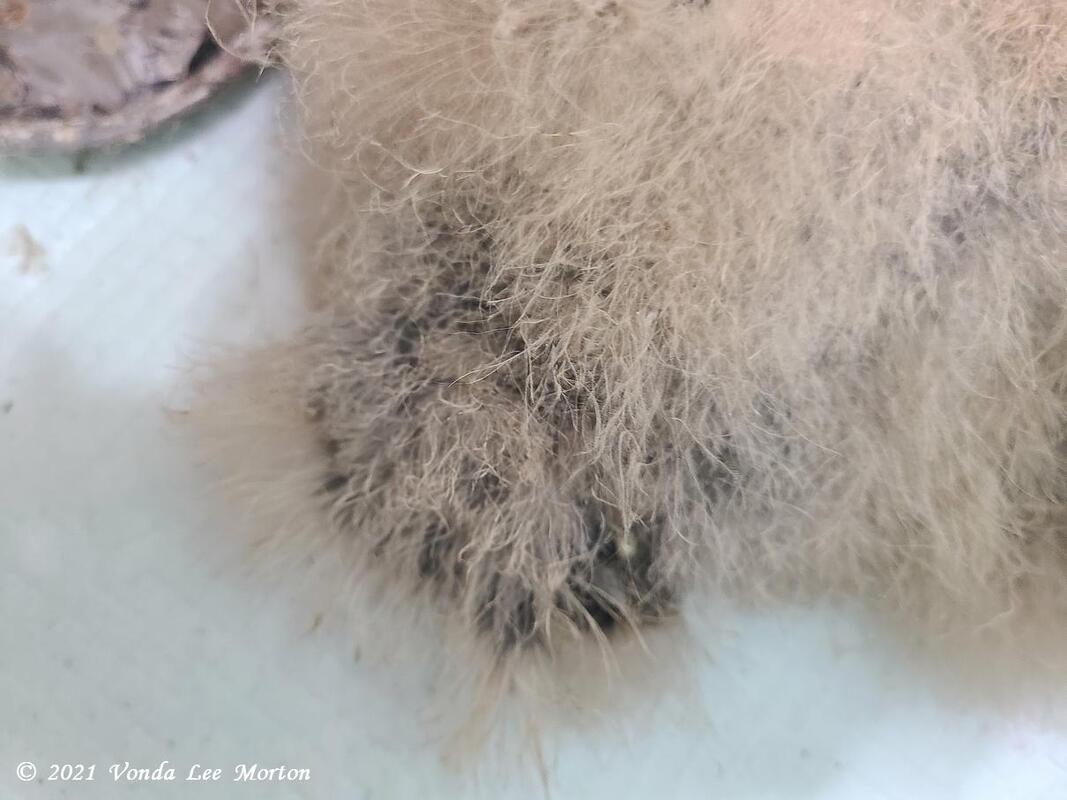
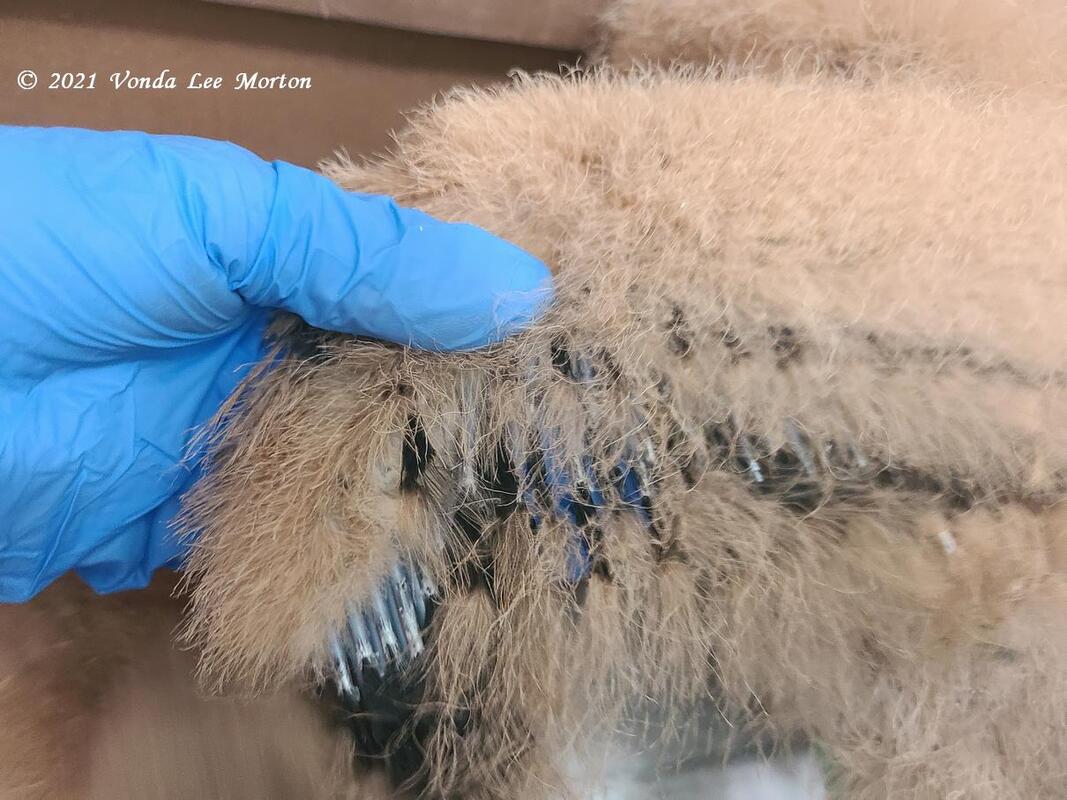
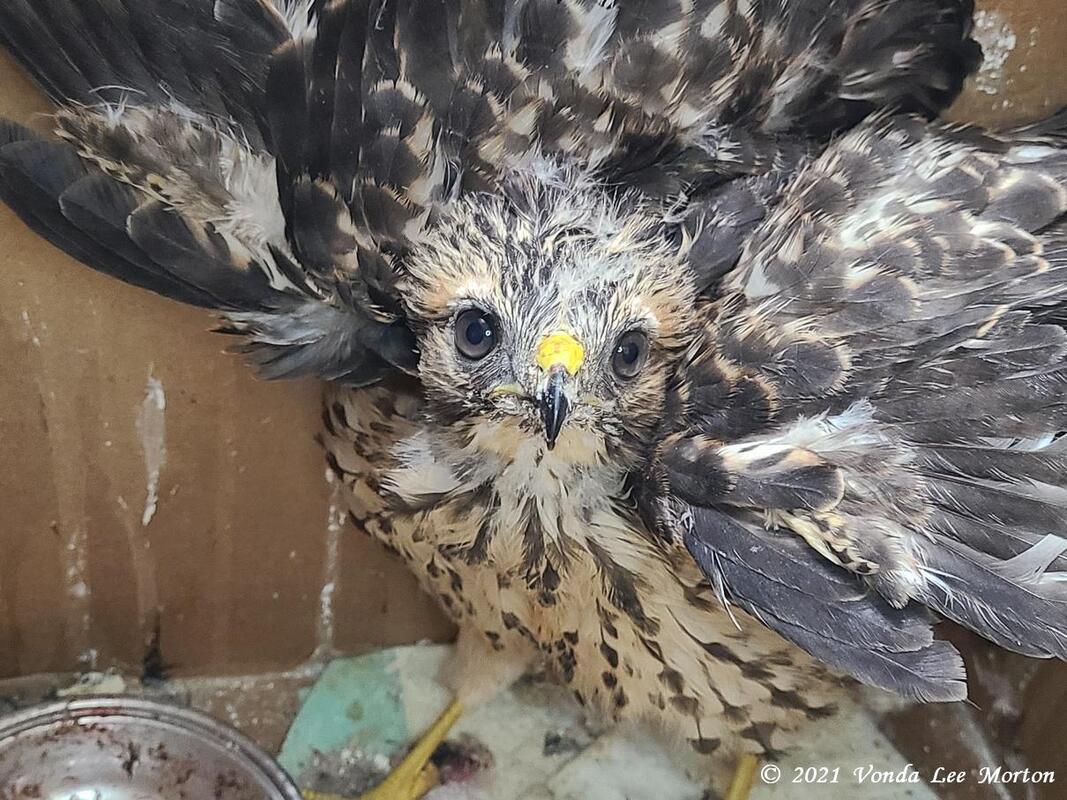
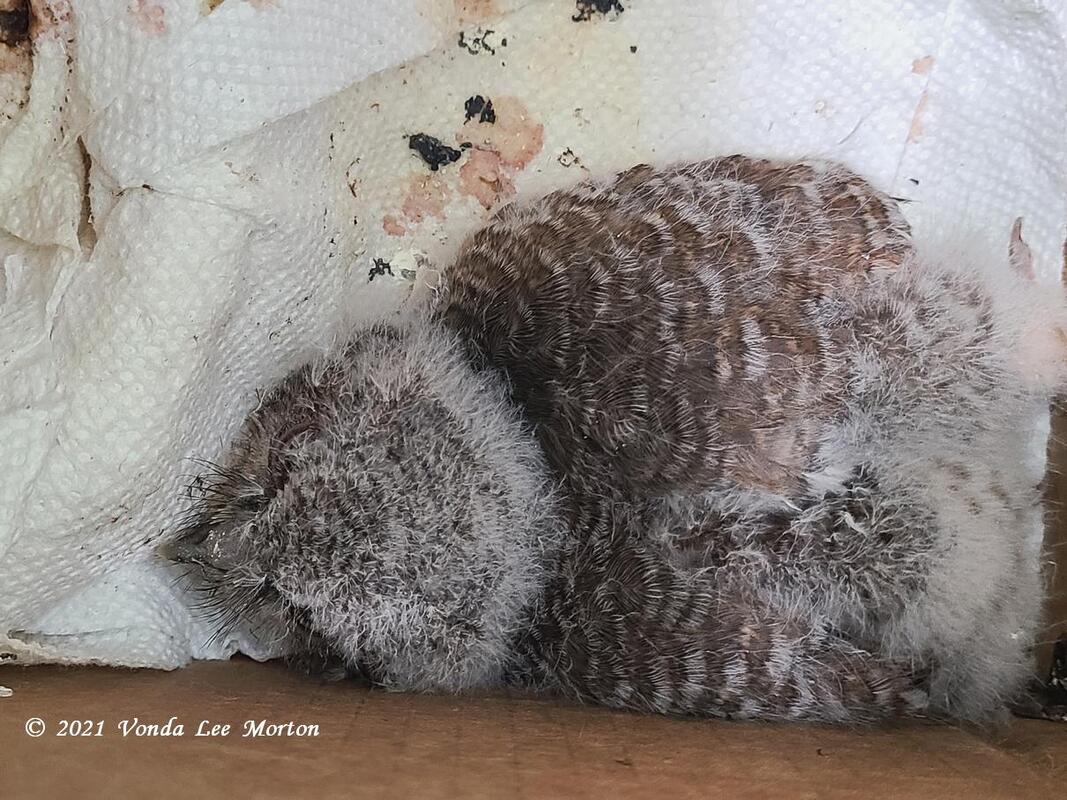
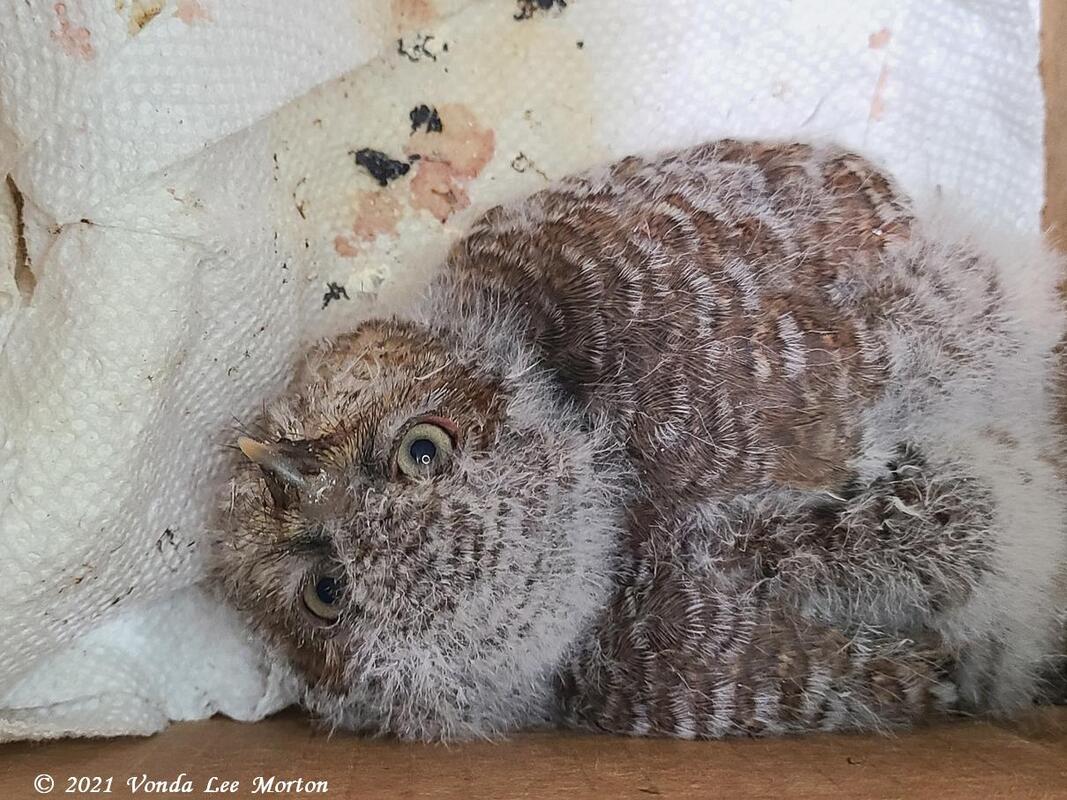
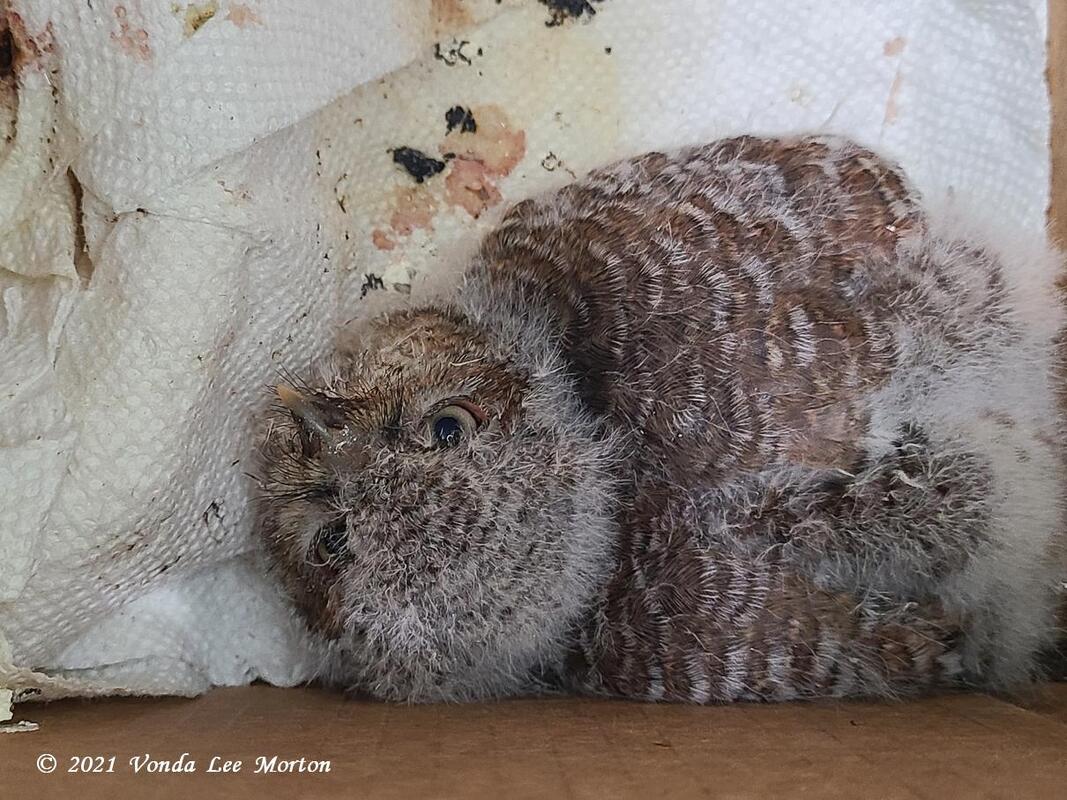
 RSS Feed
RSS Feed
